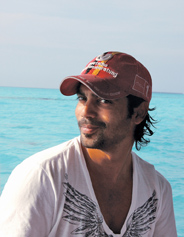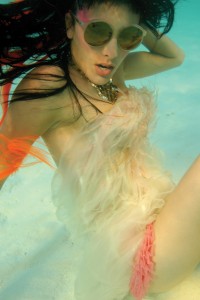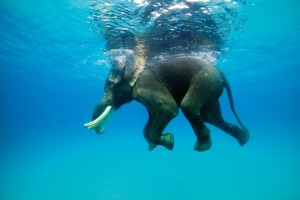Sumer Verma, the highest CMAS instructor in India and an accomplished underwater photographer, gives an account of his journeys in deep, mysterious oceans
FROM ADVERTISEMENT TO MARINE PHOTOGRAPHY
I was working in the advertisement industry with Prahlad Kakkar for a year after my graduation. During that time I went to Lakshadweep for a vacation. As a young 21-year-old, the experience of diving for the first time and walking beneath the stars on a beach… I was completely mystified by the beauty of the island life. I followed my passion, which led me to becoming a scuba diving instructor. I worked for 12 years at Lakshadweep and 5 years at Andaman for Lacadives as a diving instructor. When I returned home to Mumbai, I was quite surprised that many of my friends and other people didn’t know much about the marine ecosystem. I wanted to share my experience of those beautiful marine creatures. Everyone doesn’t go diving, so the easier way was to get photographs back to them. From then, I started doing video footages and then eventually started still photography too.
PREP BEFORE SHOOTING
If I am shooting wildlife creatures I research on the creatures and study their behaviour. Some fish have reflective, shiny, silvery surfaces and need to be lit accordingly. Whereas more light is required for creatures like turtles who have a dark surface. Underwater photography is much more than mere instincts and feeling; it involves a high level of technique.
APPROACHING SEA CREATURES
When it comes to marine photography, in most of the photographs you’ll see the backs of the creatures because they keep swimming away from people, so to get frontal portraits of fish, you have to plan. When underwater one has to be very calm and collected; one must move slowly. Fish are gentle and peaceful, inquisitive, curious and graceful creatures. They get startled with the bubbles from the scuba equipment; you can’t do anything that is aggressive or upsetting to the animals in terms of big movements. I maintain eye contact with the sea creatures to feel a connection with them while they are in their exotic trance.
THE LUMINOUS DEEP
That was the name of my first photography exhibition in 2006. Now it is my underwater photography company through which I do all my commercial assignments, advert campaigns, underwater sequences for feature films, as well as editorial imaging for both fashion and general wildlife shoots.
TROUBLED WATERS
Troubled Waters was my first feature film. I started collecting video footage and had collected a lot of footage without much idea of how to use it. 28 years of global warming had caused the El Niño current to get warm and had caused major bleaching of corals all over the world, including in Lakshadweep. In the course of 3 or 4 months, 85% of the coral reefs had gone from being perfectly brilliant to completely bleached, and the corals eventually died, crumbled and gathered moss and the entire reef system changed in front of my eyes. Therefore, Troubled Waters is a film about Lakshadweep – an isolated region that is being affected by such a global phenomenon triggered by increasing consumer demands in urban areas.
THE NEED FOR MARINE CONSERVATION
We must make people in the city aware of the creatures in the sea, what is threatening them and the role we can play in being part of a change in consciousness to protect and respect our natural habitat rather than destroy it completely like we are doing today. There is an urgent need for opinions and attitudes to change. And if my imagery can be a part of that process, I’m very happy to play my role.
MY DREAM PROJECT
I would probably take up a project of marine life and fashion photography – merging human element with wildlife. It would involve sea creatures and humans interacting in a creative way, keeping the fashion aspect in mind, and using those beautiful images to spread awareness. It would be an ambitious project in which models would work with Stingrays in the Cayman Islands or with Tiger Sharks in the Bahamas or with Manta Rays in Hawaii.
First expedition
My first expedition was at Orissa with Greenpeace to photograph the Olive Ridley Turtles
SNAPSHOTS
Favourite creature to shoot: Manta Rays
Favourite location for underwater photography: Galapagos
Best picture: school of Hammerhead Sharks
A marine photographer who inspires you: David Doubilet
If not underwater creatures, you would photograph… Tigers
Longest time underwater: about 6 hours
Number of dives so far: 7000 plus
Volume 3 Issue 6






























